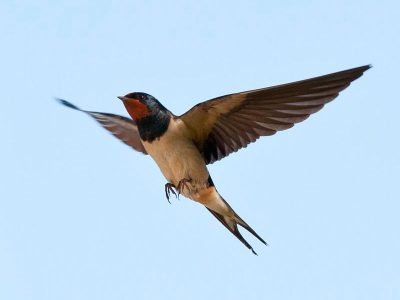When birds become a persistent problem on your property, bird repellent sprays offer a humane and effective solution. These natural deterrents use scent-based formulas to discourage birds from roosting, nesting, or feeding in unwanted areas without causing harm. From DIY recipes using common household ingredients to professional-grade commercial products, the right spray can protect your garden, property, and structures while remaining safe for pets, children, and the environment.
Quick Picks: Best Bird Repellent Sprays
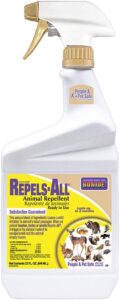
Editor’s Choice
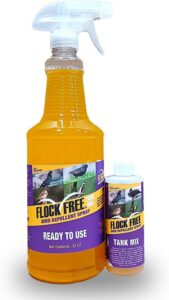
Best Value

Professional Grade
- How Bird Repellent Sprays Work
- Best DIY Bird Repellent Spray Recipes
- Top Commercial Bird Repellent Sprays
- Application Tips and Best Practices
- Identifying Target Bird Species
- Troubleshooting Common Issues
- Cost Analysis: DIY vs Commercial Options
- Professional vs. DIY: When to Call Experts
- Frequently Asked Questions
- Conclusion
How Bird Repellent Sprays Work

Bird repellent sprays function by targeting birds’ acute sense of smell, which they rely on for finding food, mates, and suitable nesting locations. These sprays contain natural compounds that create unpleasant or irritating odors for birds while remaining safe for humans and other animals.
Scent-Based Deterrent
Birds have sensitive olfactory systems that detect and avoid strong, irritating odors from natural compounds like capsaicin and essential oils.
Creates Protective Barrier
Regular application establishes scent barriers that discourage birds from landing, roosting, or nesting in treated areas.
Natural and Safe
Most effective formulas use plant-based ingredients that are environmentally friendly and safe around children and pets.
Best DIY Bird Repellent Spray Recipes
Creating your own bird repellent spray allows you to control ingredients while saving money. These proven recipes use common household items to create effective deterrents.
Chili Pepper and Vinegar Spray
This is the most popular and effective homemade bird repellent spray, combining the irritating properties of capsaicin with the strong odor of vinegar.
Crockpot Method (Recommended)
Ingredients:
- 24 red or green chili peppers (fresh or dried)
- ½ gallon of water
- ¼ cup white vinegar
Instructions:
- Slow Cook: Place all ingredients in a crockpot on low heat for 8 hours, or place in a covered container in direct sunlight during summer months. Slow extraction allows maximum capsaicin release.
- Cool and Strain: Allow mixture to cool completely, then strain out pepper pieces, retaining only the liquid.
- Transfer: Pour strained liquid into spray bottles for easy application.
- Apply: Spray generously on problem areas twice weekly and after rain events.
Quick Alternatives
- Chili Powder: Substitute 2-3 tablespoons of chili powder, dissolving with medium heat on stovetop
- Pepper Flakes: Use ¼ cup red pepper flakes following the same crockpot method
- Direct Application: Sprinkle chili powder directly around nesting sites for immediate deterrent effect
Peppermint Essential Oil Spray
Peppermint oil contains menthol, which creates a strong, cooling sensation that birds find unpleasant. This recipe also produces a pleasant scent for humans.
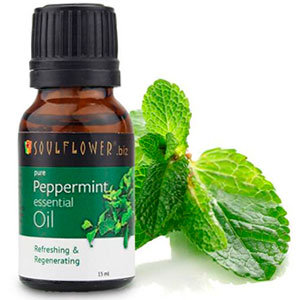
Ingredients:
- ¼ cup water
- ¼ cup vodka or rubbing alcohol (helps oil dispersion)
- 24 drops pure peppermint essential oil
Instructions:
- Combine all ingredients in a spray bottle
- Shake vigorously before each use (oil and water naturally separate)
- Apply to roosting areas every 3-4 days
- Reapply after rain or heavy dew
Garlic Spray
Garlic contains allicin, a sulfur compound that produces the characteristic pungent odor birds avoid. This spray is particularly effective against larger birds like crows and ravens.
Ingredients:
- 6 fresh garlic cloves, crushed
- ½ gallon water
- ¼ cup white vinegar
Instructions:
- Follow the same crockpot method as the chili pepper spray
- Strain out garlic pieces before bottling
- Apply twice weekly for best results
Quick Alternative: Dissolve 2 tablespoons garlic powder in the water and vinegar mixture using stovetop heating.
Lemon Citrus Spray
The L-limonene compound in citrus fruits creates a fresh scent humans enjoy but birds find offensive. This spray works well in indoor applications due to its pleasant aroma.
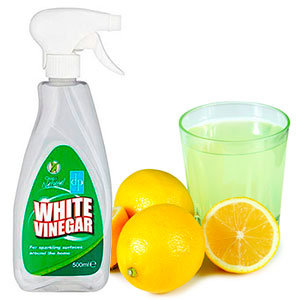
Fresh Lemon Method
Squeeze juice from 4 fresh lemons into spray bottle, fill remainder with water. Most economical option.
Essential Oil Method
Use 20-25 drops lemon essential oil with ¼ cup water and ¼ cup alcohol. More concentrated and longer-lasting.
Slow-Cook Method
Slice 4 lemons and follow crockpot method with vinegar for maximum extraction of oils.
Simple Vinegar Spray
White vinegar alone can effectively repel birds due to its strong acidic odor. This is the simplest and most economical option.
Application: Spray undiluted white vinegar directly on roosting areas, window sills, and other problem locations.
Top Commercial Bird Repellent Sprays
Commercial bird repellent sprays offer convenience and often provide more consistent results than DIY solutions. These products use concentrated natural ingredients in professionally formulated blends.
Bonide Repels-All Animal Repellent
Editor's ChoiceHow Does It Work
How to Use
- Spray directly on surfaces where birds roost or land including beams, gutters, and fences
- Apply around garden beds and fruit trees to protect crops
- Use on garbage cans, porches, and outdoor furniture
- Reapply every 30 days or after heavy rain
- Ready-to-use formula requires no mixing or preparation
- Contains multiple active ingredients for broad-spectrum effectiveness
- Safe for use around children, pets, and edible plants
- Biodegradable and environmentally friendly
- Works on multiple pest species beyond just birds
- More expensive than DIY alternatives
- Strong odor may be unpleasant for humans initially
- Requires regular reapplication for sustained effectiveness
Flock Free Bird Repellent Ready Spray Bundle
Best ValueHow Does It Work
How to Use
- Apply ready-to-use spray directly to problem areas twice weekly for first 2 weeks
- Reduce to once weekly applications for weeks 3-5
- Maintain with applications every 20-30 days
- Mix concentrate as needed for large area coverage or refills
- Includes both ready-to-use spray and concentrate for versatility
- Multiple essential oils provide broad-spectrum repelling action
- Effective against various bird species including waterfowl and songbirds
- Safe for use on trees, lawns, crops, and structures
- Concentrate offers excellent value for large properties
- Strong scent may be overpowering in enclosed spaces
- Requires frequent initial applications for establishment
- Essential oils may cause reactions in sensitive individuals
Avian Migrate Goose Deterrent and Bird Repellent Concentrate
Professional GradeHow Does It Work
How to Use
- Mix concentrate according to label directions (typically 1 part concentrate to 4-8 parts water)
- Apply weekly initially, then reduce frequency as birds establish avoidance patterns
- Reapply after heavy rain or lawn mowing
- Best results when applied consistently over 2-3 week period
- EPA-registered formula ensures consistent quality and effectiveness
- Dual-action approach combines scent and visual deterrents
- Highly effective against geese, ducks, and other waterfowl
- Pleasant grape scent for humans
- Concentrate format provides excellent coverage area per bottle
- Made in USA with quality control standards
- Higher initial cost compared to other options
- Requires mixing before each application
- Most effective on waterfowl; may be less effective on smaller songbirds
- Purple dye may temporarily stain some surfaces
Application Tips and Best Practices
Proper application technique significantly impacts the effectiveness of bird repellent sprays. Follow these professional recommendations to maximize results.
Target Key Areas
Focus on roosting spots, nesting sites, feeding areas, and travel corridors where birds consistently gather or pass through.
Timing Matters
Apply sprays during calm weather conditions, preferably in early morning or evening when birds are most active in establishing territory.
Consistency is Key
Regular reapplication is essential for maintaining effectiveness. Never skip scheduled applications during the establishment period.
Surface Testing
Before widespread application, test sprays on inconspicuous areas to check for staining or damage, particularly on:
- Painted surfaces and siding
- Natural stone and concrete
- Metal fixtures and hardware
- Fabric awnings and cushions
Weather Considerations
Optimal Application Conditions
- Dry Weather: Apply when no rain is forecast for 24-48 hours
- Low Wind: Calm conditions prevent spray drift and ensure accurate coverage
- Moderate Temperature: Avoid extreme heat which can cause rapid evaporation
- Morning Application: Allows spray to dry before evening bird activity
Identifying Target Bird Species
Different bird species respond better to specific repellent formulas. Proper identification helps you choose the most effective approach.
| Bird Type | Common Issues | Most Effective Repellents | Application Focus |
|---|---|---|---|
| Pigeons | Roosting on ledges, droppings, nesting in eaves | Chili pepper spray, commercial multi-oil formulas | Building ledges, window sills, roof lines |
| Crows/Ravens | Garbage raiding, crop damage, noise | Garlic spray, vinegar solutions | Feeding areas, garbage cans, garden perimeters |
| Sparrows | Nesting in vents, crop damage, large flocks | Peppermint oil, citrus sprays | Vent openings, small crevices, garden areas |
| Geese/Ducks | Lawn damage, aggressive behavior, droppings | Methyl anthranilate products, grape-scented formulas | Lawn areas, pond edges, walkways |
| Woodpeckers | Property damage, drumming noise | Strong vinegar solutions, multi-sensory approaches | Siding, trim, dead trees |
Troubleshooting Common Issues
If your bird repellent spray isn’t producing expected results, these troubleshooting steps can help identify and resolve problems.
Spray Isn’t Working
Check Coverage
Ensure you’re treating all roosting and nesting areas. Birds will find untreated spots and establish new territories there.
Increase Frequency
Some bird populations require more frequent applications initially. Try daily applications for one week.
Strengthen Formula
Increase active ingredient concentration or switch to a different base ingredient that may be more effective for your bird species.
Spray Damage to Surfaces
- Staining: Dilute formulas or switch to clear-based ingredients like vinegar
- Plant Damage: Avoid direct application to foliage; treat surrounding areas instead
- Metal Corrosion: Rinse metal surfaces after treatment or use non-acidic formulas
Strong Odor Issues
- Indoor Applications: Switch to citrus-based formulas with more pleasant scents
- Neighbor Complaints: Use lower concentrations or targeted applications rather than broad coverage
- Lingering Smells: Allow longer drying times and ensure adequate ventilation
Cost Analysis: DIY vs Commercial Options
Understanding the cost implications helps you choose the most economical approach for your situation.
| Option | Initial Cost | Coverage Area | Cost Per Application | Annual Cost (Average Property) |
|---|---|---|---|---|
| DIY Chili Pepper Spray | $8-12 | 2,000 sq ft | $0.50 | $25-35 |
| DIY Essential Oil Spray | $15-20 | 1,500 sq ft | $1.25 | $45-60 |
| Bonide Repels-All | $18-25 | 1,000 sq ft | $2.00 | $85-110 |
| Flock Free Bundle | $35-45 | 4,000 sq ft | $1.15 | $75-95 |
| Avian Migrate Concentrate | $65-80 | 8,000 sq ft | $0.85 | $85-105 |
Professional vs. DIY: When to Call Experts
While many bird problems can be resolved with DIY sprays, certain situations require professional intervention.
Call Professionals When:
Large Infestations
Flocks of 50+ birds or multiple species require comprehensive management strategies beyond simple spraying.
Structural Damage
When birds have caused significant property damage or health hazards from accumulated droppings.
Protected Species
Any issues involving federally protected birds require professional assessment and specialized permits.
DIY Approach Works For:
- Small residential properties with minor bird issues
- Preventive applications before problems become established
- Non-protected species like pigeons and starlings
- Seasonal deterrent needs in gardens and outdoor areas
Frequently Asked Questions
How long does it take for bird repellent spray to work?
Most birds will begin avoiding treated areas within 24-48 hours of initial application. However, complete deterrent effect typically takes 1-2 weeks of consistent application as birds learn to associate the scent with unpleasant experiences.
Stubborn populations or established roosting sites may require 3-4 weeks of persistent treatment before birds relocate permanently.
Is bird repellent spray safe for vegetable gardens?
Natural bird repellent sprays using ingredients like chili peppers, garlic, and essential oils are generally safe for vegetable gardens when applied properly. Avoid spraying directly on edible parts of plants, and wash all produce thoroughly before consumption.
Vinegar-based sprays should be used carefully as they can damage plant foliage. Test on small areas first and consider applying to surrounding areas rather than directly on plants.
Can I use bird repellent spray indoors?
Yes, but choose appropriate formulas for indoor use. Citrus-based and mild peppermint sprays work well indoors and provide pleasant scents for humans. Avoid strong-smelling formulas like garlic or high-concentration chili pepper sprays in enclosed spaces.
Ensure adequate ventilation during application and keep pets and children away from treated areas until completely dry.
Why did the spray stop working after a few weeks?
Birds can become habituated to repellent scents over time, especially if applications are inconsistent. Try rotating between different formulas (chili pepper to peppermint to garlic) every 2-3 weeks to prevent habituation.
Weather conditions, inadequate coverage, or insufficient concentration may also reduce effectiveness. Increase application frequency and check for missed treatment areas.
How often should I reapply bird repellent spray?
Application frequency depends on weather conditions, bird pressure, and formula type. Initially, apply every 2-3 days for the first 2 weeks to establish deterrent zones. Once effective, reduce to weekly applications for maintenance.
Always reapply after rain, heavy dew, or irrigation. Commercial products typically last longer than DIY formulas, with some requiring only monthly applications.
Will bird repellent spray harm beneficial birds or pollinators?
Natural bird repellent sprays are designed to deter rather than harm birds and typically don’t affect beneficial species when used properly. The scent-based deterrents are temporary and reversible, allowing birds to return once applications cease.
To protect pollinators, avoid spraying flowering plants during blooming periods and apply targeted treatments rather than broadcast spraying across entire areas.
Can I mix different bird repellent ingredients together?
Yes, combining ingredients can increase effectiveness. Popular combinations include chili pepper with vinegar, garlic with peppermint oil, or citrus with vinegar. Start with lower concentrations when mixing to avoid overly strong formulas that might damage surfaces.
Avoid mixing essential oils with vinegar in the same solution as this can reduce the effectiveness of both ingredients. Instead, alternate between different formulas every few applications.
What should I do if birds return after successful treatment?
Bird return is common, especially during migration periods or seasonal behavior changes. Resume regular applications immediately and consider increasing concentration or switching to a different formula. Combine sprays with physical deterrents like reflective tape or decoys.
Ensure you’re treating all potential roosting and nesting sites, as birds will exploit any untreated areas to re-establish territories.
Conclusion
Bird repellent sprays provide an effective, humane solution for managing unwanted bird activity on your property. Whether you choose cost-effective DIY recipes using household ingredients like chili peppers and vinegar, or invest in professional-grade commercial formulas, success depends on proper application techniques and consistent maintenance.
The key to long-term effectiveness lies in understanding bird behavior, targeting the right species with appropriate formulas, and maintaining regular application schedules. By combining repellent sprays with complementary deterrent methods and following legal guidelines, you can create lasting solutions that protect your property while respecting wildlife.
Remember that patience and persistence are essential—most bird problems require 2-4 weeks of consistent treatment before achieving permanent deterrent effects. With proper application and maintenance, bird repellent sprays can provide years of effective, environmentally-friendly bird control for your home and garden.
